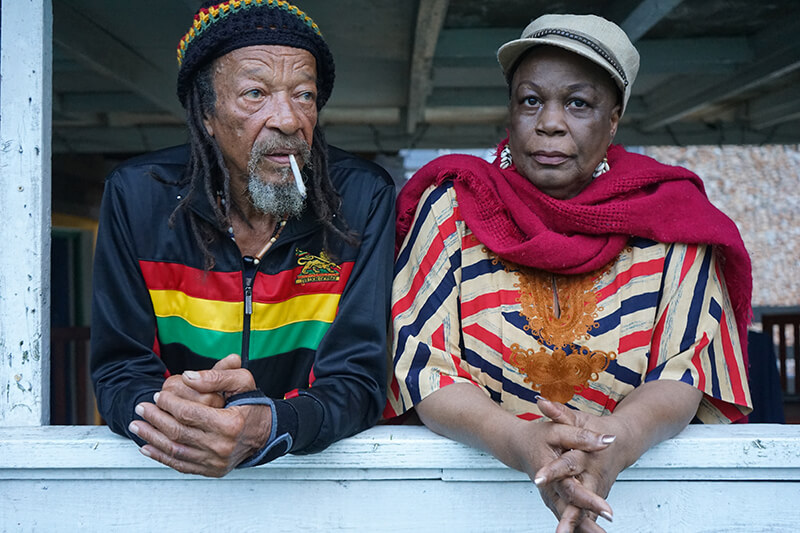FRONTRUNNER Film Review: Inna De Yard

“It’s Not Music That Comes First For Me, It’s People.”
A group of veteran reggae musicians, who saw the height of their fame in the late 70s and early 80s, return to their homeland of Jamaica to record an acoustic album of their most popular hits. Split between live recordings and interview segments, it is a journey that takes them back to their roots and explores the importance between the music and the people.

Film still
Dir. Peter Webber
Image courtesy of Borsalino Productions, Wagram Films and Chapter 2 Records
The most touching instances of director Peter Webber’s film occur when the characters explain the spirituality of their music and its symbiotic link with the land. The lyrics of their songs are reflections of everyday realities that can be appreciated by society as a whole – and their purpose – to build a global community. Inna De Yard exploits the notion that rocksteady, ska and reggae liberate the Jamaican people, who suffer from unavoidable social and economic constraints. Neighbourhoods plagued with crime, poverty and tensions with police are given a creative outlet that feature timeless songs, which instil hope and understanding in the listener. Oddly, the documentary shies away from the hefty political and historical implications of the music genre, which seems counteractive when discussing its resurgence with a younger generation.
The cinematography captures both the touristic and social realist aesthetics of Jamaica. Every tracking shot offers a bird’s-eye view of the tropical Eden. The camera floats above the clouds flaunting the epic landscapes with its luscious, green forests and clear, blue beaches. These natural wonders of Stormy Hill, St. Andrew are juxtaposed by images of the shantytown of Kingston. Stray dogs, dishevelled homes and discarded bric-a-brac line the rundown streets of the capital city. As a result, this binary effect makes for a very fair representation of the country where beauty and squalor, nature and man harmoniously coexist in the same space. This is a theme that is also embedded within the ambition and intention of the musicians themselves. Their aim is to produce an album in its “virgin state”, to strip back their own recordings in order to mirror their “origin of creation”. The absence of a soundproof studio incorporates the ambient background noises of their locale. Consequently, these new versions of old tracks are mastered with the sounds of birdsong, rainfall and the crashing of waves, bringing with it a higher sense of cultural authenticity and significance.

Dir. Peter Webber
Courtesy of Borsalino Productions, Wagram Films and Chapter 2 Records
The documentary may lack real depth, but it does have heart. It’s worth arguing that Webber has intentionally distanced himself from the characters and their intimate community. These musicians have a heavy history, plagued with exploitation, prejudice and general misfortune. He cleverly constructs an objective perspective of these people’s lives while steering the audience ever so slightly into a dramatic and emotive response. It’s an empathetic stance rather than a guilty or sympathetic one, amplified tenfold by the musical numbers featured in the soundtrack. Inna De Yard is by no means a documentary suited exclusively for completist fans of reggae music. Like the genre itself, the message of the film has more a universal application. Its ideology is simple: no matter who you are or where to come from, mankind must belong, be heard, be valued and be kind to find happiness in this life.

Dir. Peter Webber
Image courtesy of Borsalino Productions, Wagram Films and Chapter 2 Records